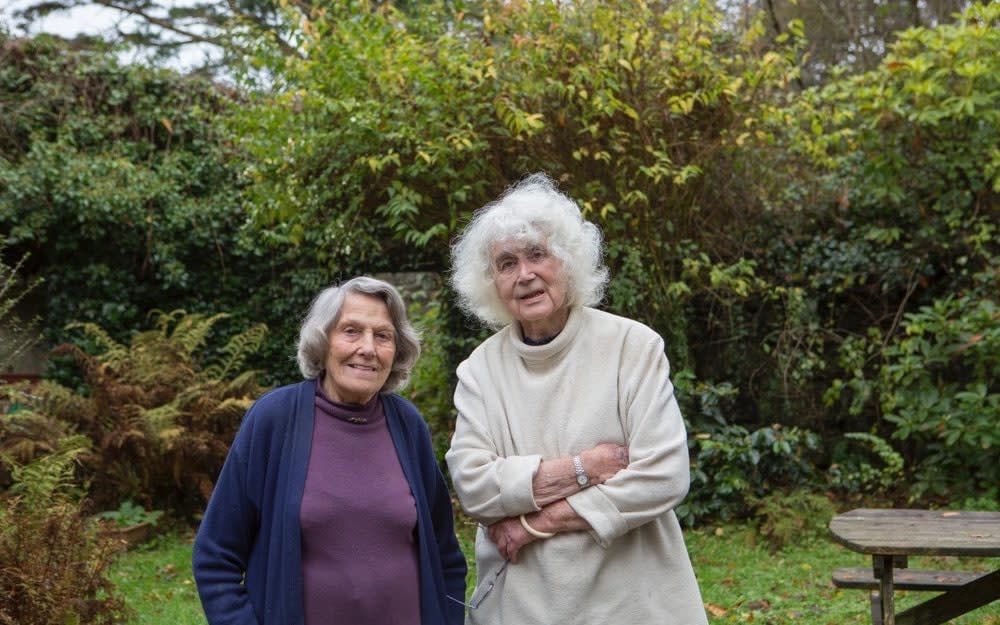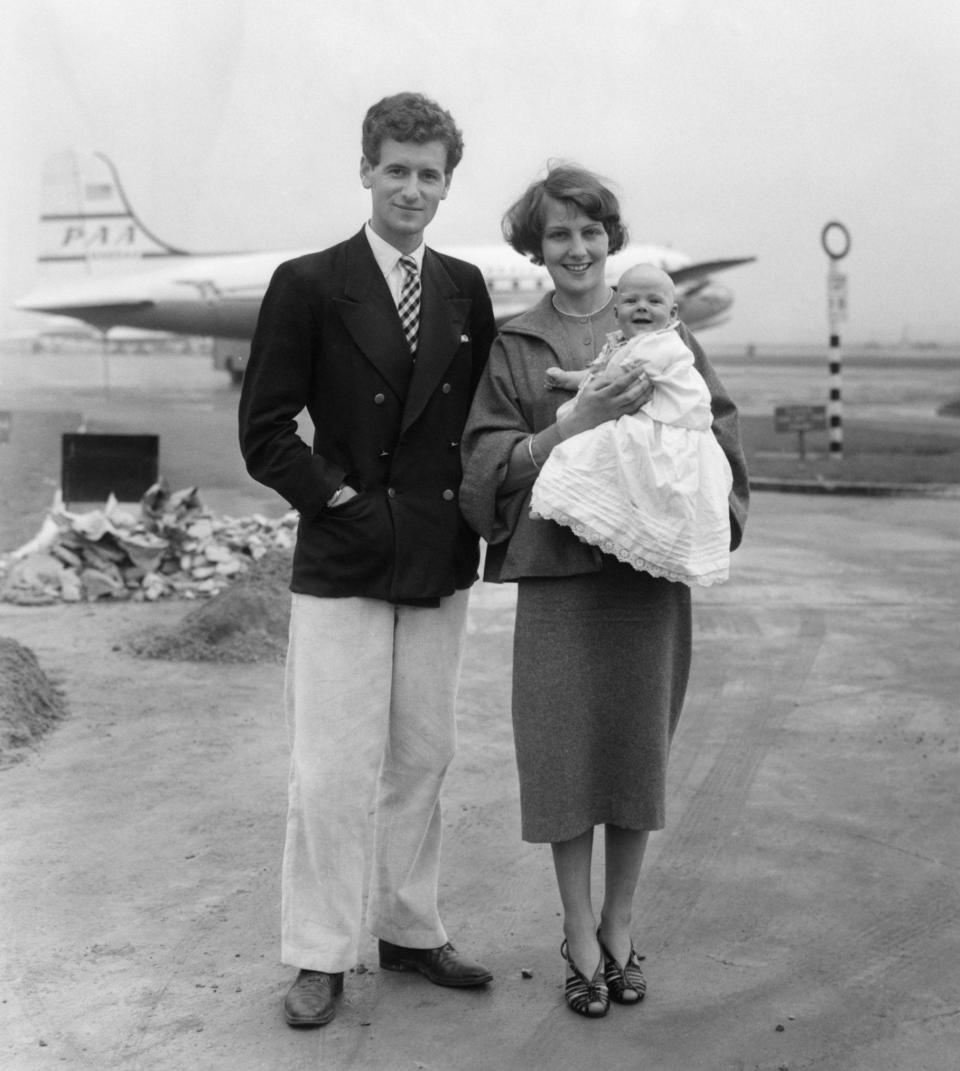Elizabeth Morris, wife of writer Jan and a strong support through her gender reassignment – obituary

Elizabeth Morris, who has died aged 99, was the wife of the writer Jan Morris, whom she supported and helped through gender reassignment with inner strength and quiet dignity.
Although Jan’s operation took place in Casablanca in 1972, Elizabeth had known from their earliest days together that the man she was marrying – then James Morris – wanted to be a woman. That was in 1949, when the notion of transitioning from one sex to another was for most people not only uncomfortable but also unknown.
The procedure took place in Morocco, because the surgeons whom James Morris had consulted in Britain declined to operate without a divorce. The couple did divorce in 1973, when same-sex marriages were illegal, but in 2008 they entered a civil partnership. They remained together throughout, living in the village in which Lloyd George had spent his childhood and is buried, Llanystumdwy in Caernarfonshire.
Elizabeth was an easy target when people mocked the arrangement in general, and Jan in particular. Jan’s memoir of the transition, Conundrum (1974), received mixed reviews, some kind, some openly hostile. (Faber is reissuing Conundrum this year to mark its 50th anniversary.)
In the Evening Standard, Germaine Greer wrote: “As Jan Morris plucks at your sleeve for a girlish heart to heart, you wonder about Elizabeth. Her unbroken silence is the truest measure of Jan Morris’s enduring masculinity.”
This led Elizabeth to a rare public intervention, and she wrote to the paper: “In her bigoted review of Jan Morris’s Conundrum, which gets so many facts wrong, Germaine Greer describes me as a silent and anguished figure. I am not very silent, and certainly not anguished. The children and I not only love Jan dearly, but are also very proud of her.”
In private, Elizabeth was vivacious company and maintained close friendships with the significant people in Jan’s life. She was an admired gardener, and devoted to animals: she would breed cats and donkeys, keeping careful records of each new arrival.

She was born Margaret Elizabeth Tuckniss on August 31 1924 in Sri Lanka (then Ceylon), where her father, Austen Cecil Tuckniss, ran a tea plantation. Her mother, Margaret, was an accomplished musician who had studied violin at the Royal College of Music.
Elizabeth and her older brother adopted a baby elephant. But Margaret died when Elizabeth was eight, and Austen when she was 13. An aunt, Betty Bourne, picked the orphans up by boat and brought them to Paignton in Devon, where they were brought up by maternal grandparents.
During the war, Elizabeth joined the Wrens. She was stationed in an underground war room in Portsmouth where she decoded signals and packed kit bags, into which she would slip encouraging messages for the soldiers. In January 1949 she was working for an architect when she met James Morris, who had worked for a news agency in Cairo and was in London for an Arabic course. They were married in March.
The years that followed were peripatetic. Elizabeth embraced adventure with the open mind that had already led her to accept James’s decision to become Jan. The couple were often, but not always, in the same exotic places.
Elizabeth was pregnant with their first child, Mark, when James was sent to the Middle East, poised to break the story of Edmund Hillary’s Everest ascent in 1953. When their second child was born, Hillary became the godfather. And when a film of the expedition appeared the following year, James was again away. At the royal premiere in Leicester Square, Elizabeth was accompanied by the foreign news editor of The Times.
Otherwise, they shared adventures: there were 40,000 miles of road trip in 1954, during research on James’s first book, Coast to Coast, during which Elizabeth discovered a love of pizza; a residence in the French Alps and a houseboat in Egypt; and then Venice, where the British ambassador’s governess helped to educate the two children.

More children followed and, with them, a need to settle, although there was one last family trip – around Spain in a camper van in 1963. In 1960 they went to the Old Rectory, Waterperry, Oxfordshire, and then, in 1965, to Llanystumdwy. During the move to Waterperry, their third child, Virginia, died of complications from a hornet sting. A son, Twm, was born in 1961, and a daughter, Suki, in 1964.
Elizabeth made a home in the large house of Plas Trefan; it boasted a walled garden, which echoed with the barking of dogs and the cawing of peacocks, and which flourished under her care. In 1972 they sold it, in part to pay for the operation in Casablanca, but kept the stables, which became their new home. Elizabeth continued to garden, but now on the other side of the wall.
She continued to assist Jan throughout the years of prolific writing. On May 14 2008, Jan and Elizabeth had a civil partnership ceremony at Pwllheli council hall; the couple who were witnesses invited them for tea afterwards. Elizabeth told the Evening Standard: “I made my marriage vows 59 years ago and still have them. We are back together again officially. After Jan had a sex change we had to divorce. So there we were. It did not make any difference to me. We still had our family. We just carried on.”
As if in a mirror image of their earlier life, Jan would go on cruises to give talks and Elizabeth would travel with her. In 2017 she began to show signs of dementia, and for the last three years of her life she lived in care homes. Her ashes are to rest with Jan’s, scattered on an islet they owned on the Dwyfor river near Trefan Morys. There is to be a slate headstone, with inscriptions in Welsh and English, saying: “Here are two friends, at the end of one life.”
Elizabeth Morris is survived by her four children, Mark, Henry, Twm, and Suki.
Elizabeth Morris, born August 31 1924, died June 17 2024

 Yahoo News
Yahoo News 
